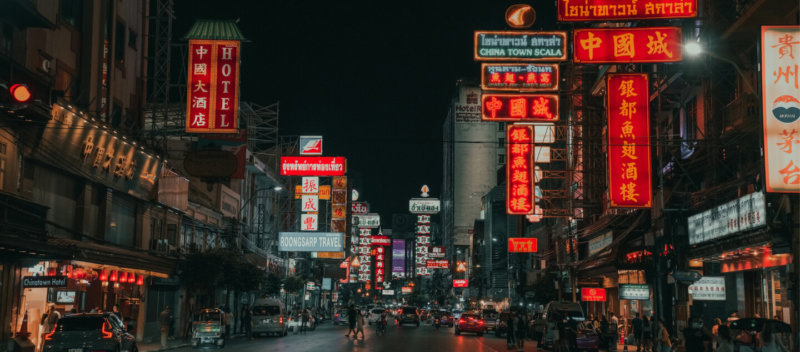

Thai fruit culture is much, much more than just durians. Here, fruits are usually eaten after meals, and sometimes even as snacks during the day. There are tons of different fruits available in Thailand all year round, and trying them out can be exciting, fun and delicious. Here are some tips so you can look like a local when you’re out fruit-hunting:

The vendors might be the easiest way to start off your Thai fruit journey. They are easy to find and the choices are quite general, almost colour-coded: red is watermelon, orange is papaya, yellow is pineapple, and green is guava. The fruits are cut into pieces for easy eating and digestion. Along with your fruit, they’ll give you a little bag of ‘Prik-Kluea’, a dip made with chilli flakes, salt and sugar—dip your mango in and try the flavour explosion. The downside of these vendors is that they tend to use excessive plastic bags, which you can prevent by providing them tupperwares instead.

Aside from the vendors, you can also buy fresh fruit from local shops or stalls. The choices are wider and you won’t have to deal with plastic bags. The challenging part, though, is the processing: most of the fruit skins are inedible and need to be removed. There are simple ones like mangosteens and rambutans where, by slicing the shell horizontally with a knife, it can be opened like a lid. Some other fruits, like dragon fruits and sapodillas, have their flesh attached to the skin, so it’s easy to just cut it in half and use a spoon to scoop it up like dessert in a bowl. The hard-shell ones, like pomelos, papayas, jackfruits and durians, are more complicated and generally Thai shoppers leave it to the professionals, but you can try it out if you’re feeling brave enough.

Fruit prices depend heavily on the season; if a fruit is in-season, the price will be low and the goods will taste better. So eat smart and choose your fruit according to its nature. During the hot weather from May to September, we highly recommend rambutans, durians, mangosteens and longans. In the short winter from November to February, it is better to try mandarins, lychees, jujubes and watermelons. There are also fruits that are available all year long, such as guavas and coconuts.

From their looks, some fruits can be confused with others. For example, foreigners might confuse longan with longkong, two fruits that taste entirely different. However, there are some pairs that differ so little that even locals cannot tell apart. The most famous one is salak (or ra-kam in Thai) and salacca (confusingly called sa-la in Thai), of which salacca is better in every way, except the sharper thorns on the skin. Then you have longkong and langsat, which taste almost exactly the same, but generally, the overall quality of longkongs differs less; they tend not to be too sweet or too sour. Same goes for maprang and mayongchid—mayongchid being the more consistent one.

Even fruits with same name can differ in taste according to its subspecies. Durians and mangos, for instance, have many variations. For durians, there are three main species: Mon-Thong, Kan-Yaaw and Cha-Nee. Cha-Nee is usually processed before eaten, while Kan-Yaaw is the most expensive one, and Mon-Thong is the local favourite due to its sweetness and meatiness. For mangos, the sweetest subspecies is ‘Nam-Dok-Mai’, while we usually eat ‘Ok-Rong’ with sticky rice, and the one that’s best eaten raw is ‘Rad’. On the other hand, fruits like mangosteens don’t have subspecies, so they are all alike.
